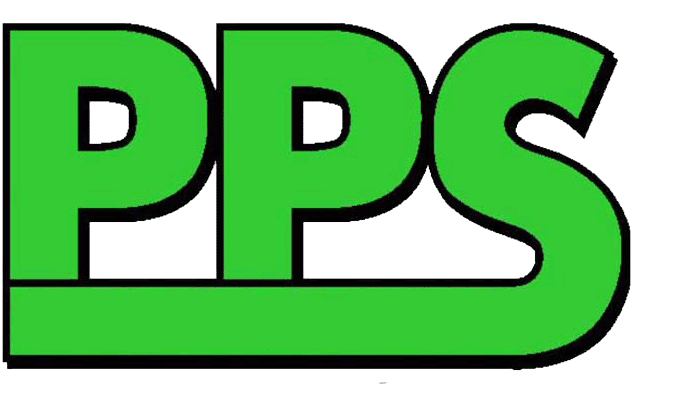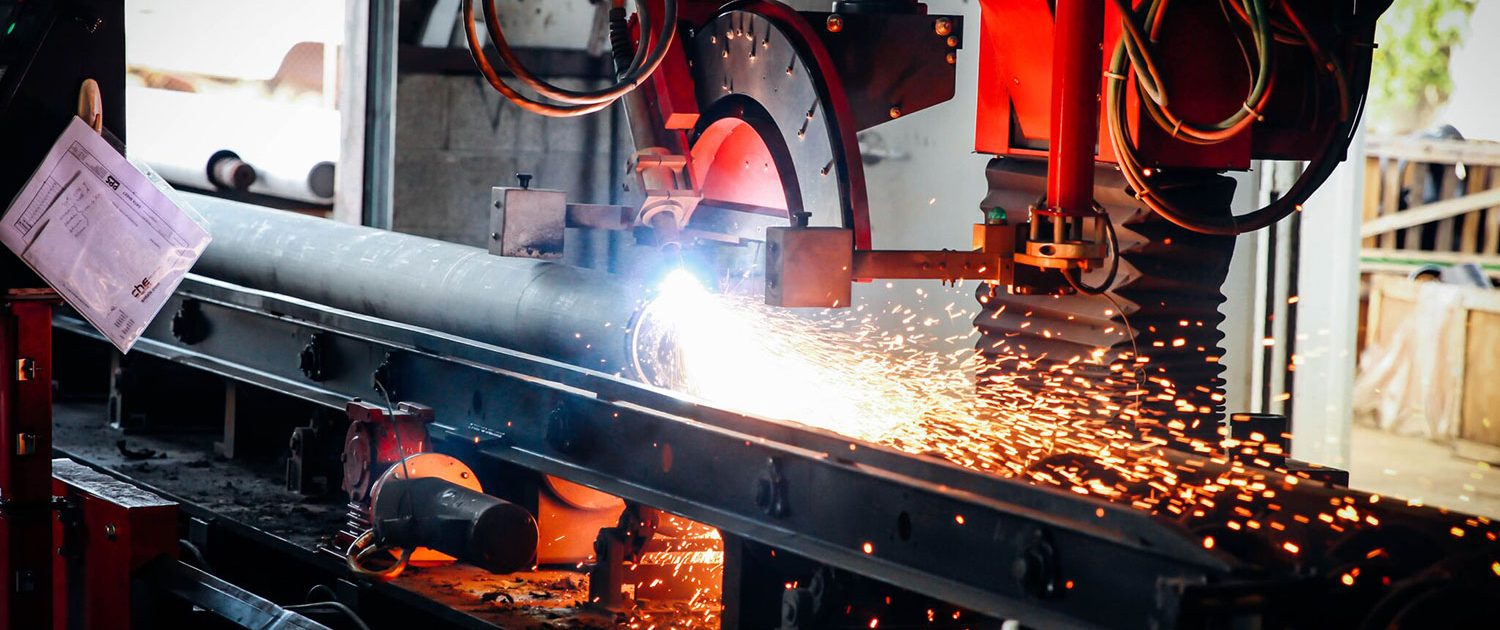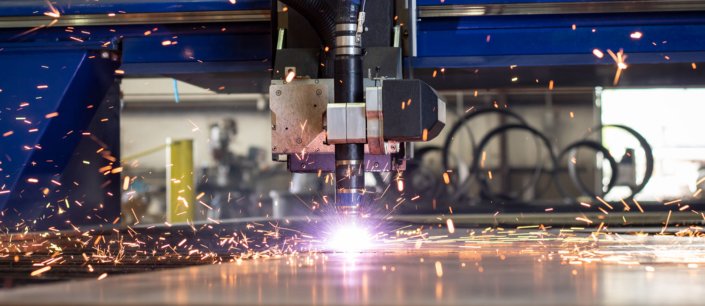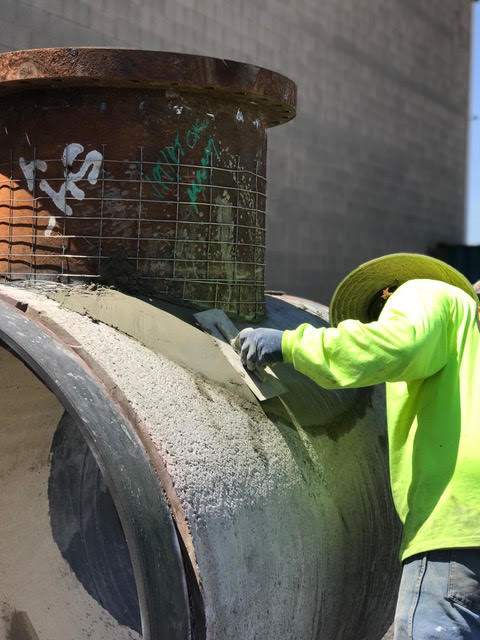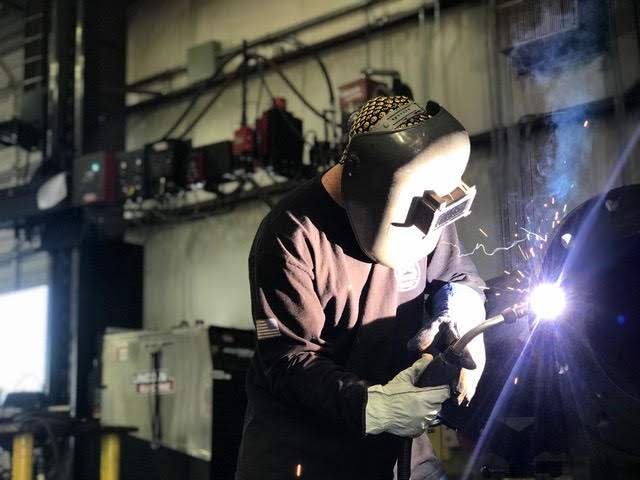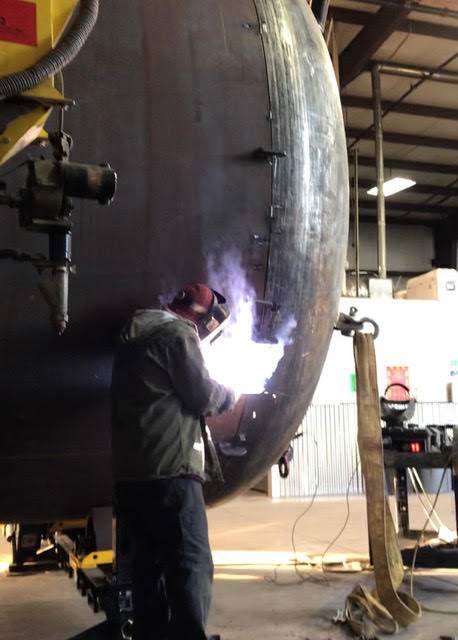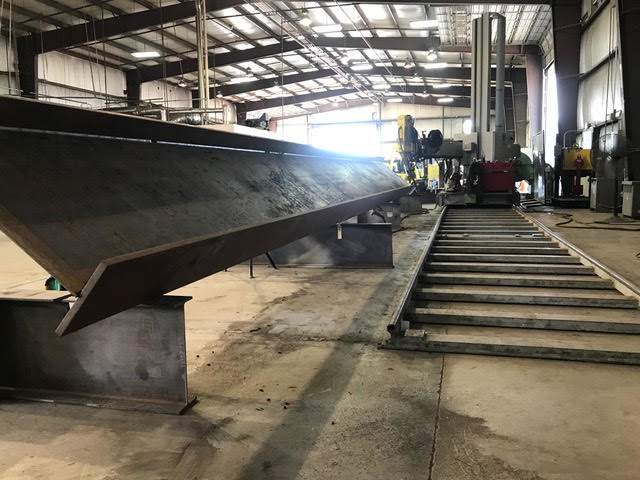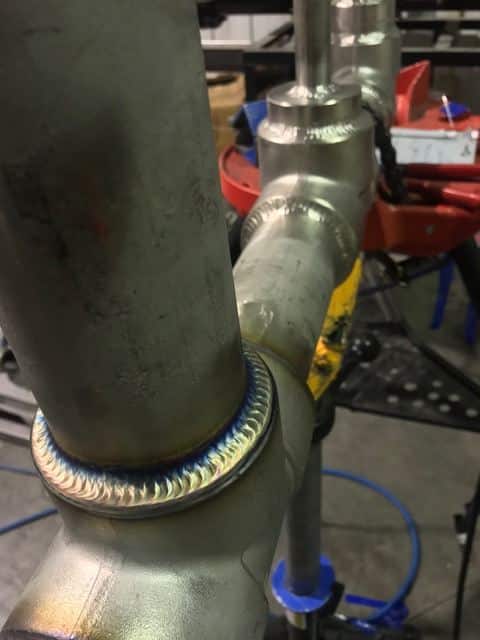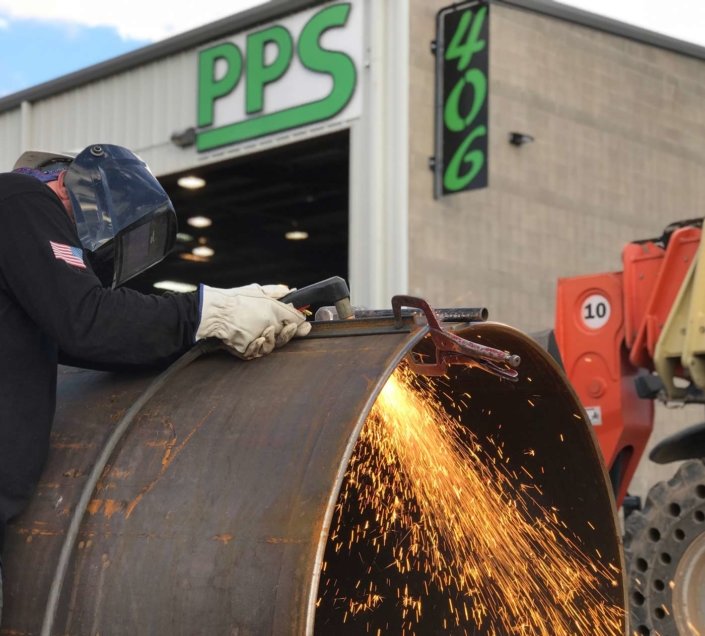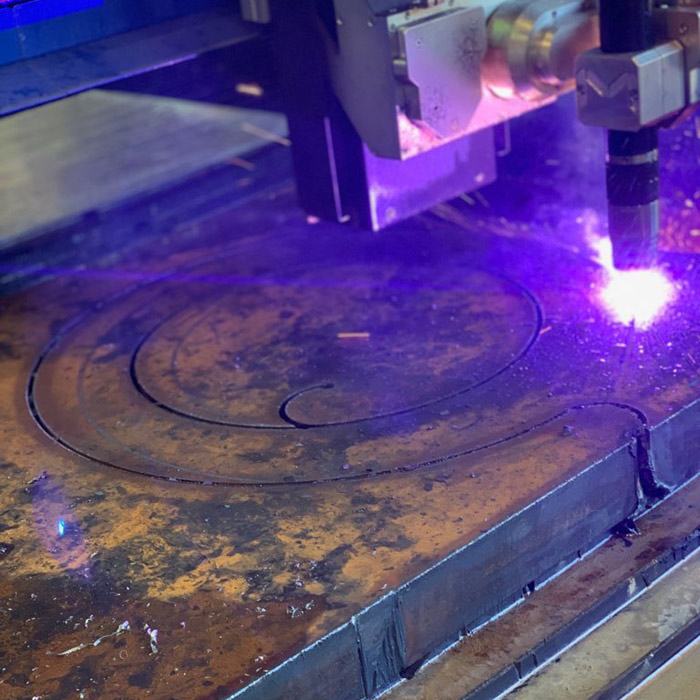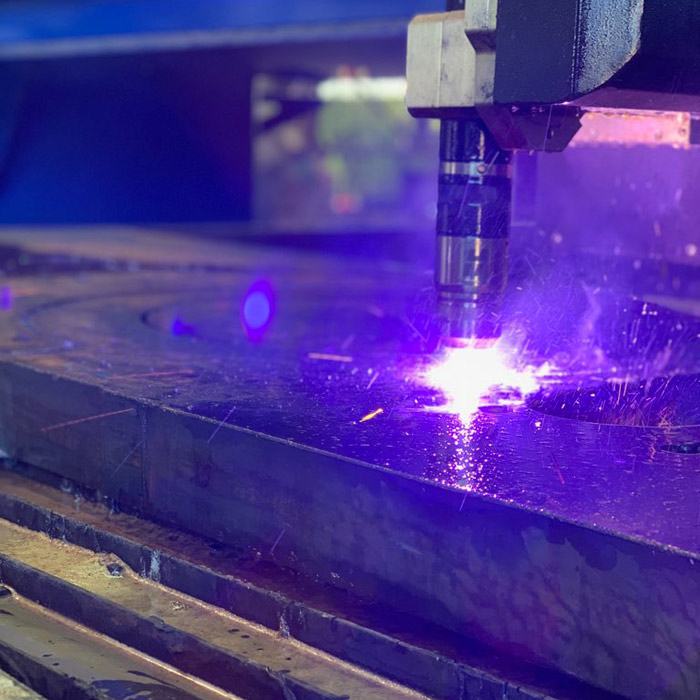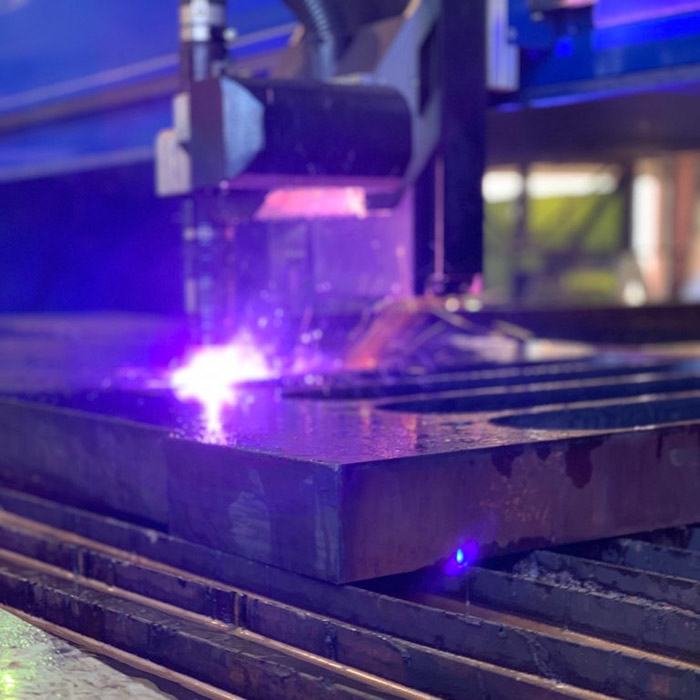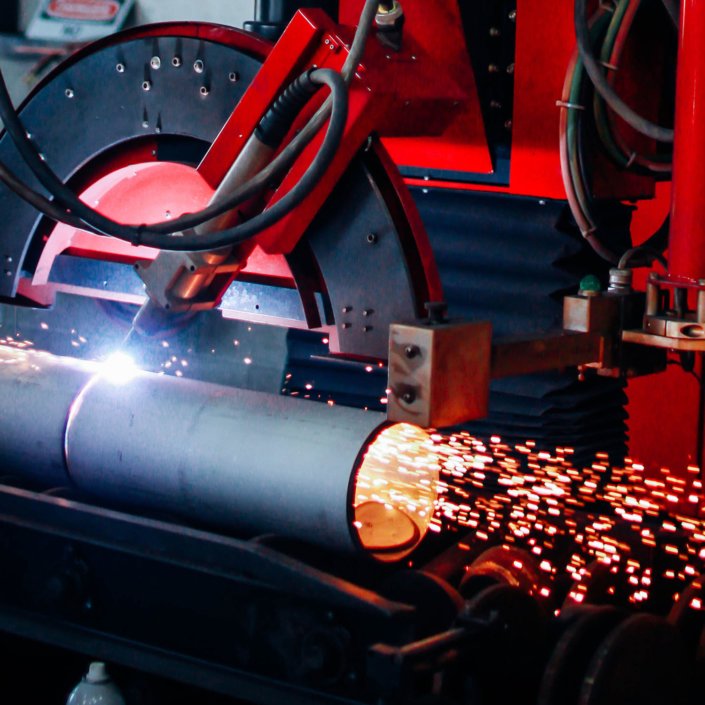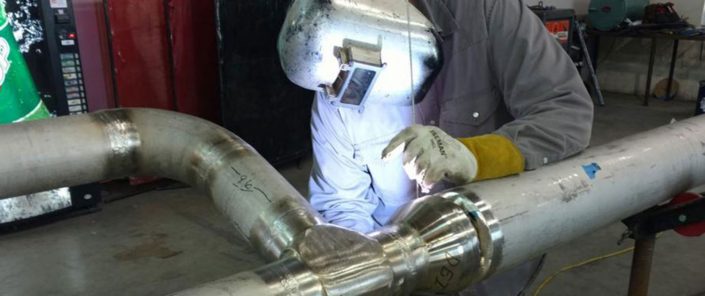Certified in cutting via numeric control (CNC), the staff at PPS have years of experience and training in the skill. CNC typically utilizes torches, water jets, lasers, plasma, or mill bits as needed for various projects.
PPS uses the practice of CNC Plasma cutting to precisely cut shapes and contour through thick metal sheets, pipes, or even structural beams. The process involves outputting 2D profiled sections, which allows plasma cutting to be categorized as a “profiling” process.
In basic terms, plasma is essentially gas which is heated by an electric arc to create a plasma beam that can melt metal almost instantly. Combining heat and plasma, in addition to the extreme pressure of the concentrated stream of gas, a uniquely powerful cutting mechanism is created. The plasma melts the thick material, all while the pressure from the gas eliminates the molten material.
Configuring Plasma Cutting
2D Plasma Cutting
This is also referred to as “flat-bed” plasma cutting since it produces flat profiles from either a sheet or plate, with straight edges at 90 degrees that profiles the surface. Most of the time the high-power plasma cutting beds are designed this way in order to give the largest depth of cut, which is often between 100-150mm.
3D Plasma Cutting
This process is pretty similar to the 2D plasma cutting, and it can also sometimes referred to as “flat-bed” plasma cutting. However, this variation adds in a third dimension. By introducing an angular cut or bevelled edge through the sheet or plate material, this is when the third dimension is added. Typically the High Definition plasma cutting is designed this way in order to provide the most flexibility, as well as typically giving the greatest flexibility, accuracy, and/or speed.
Tube & Section Plasma Cutting
The major changes and enhancements compared with “flat-bed” plasma cutting is the stock material and the cutting axes. Typically the plasma cutting head is stationary while the pipe is maneuvered under the beam. This creates end profiles, slots, tags, and hole in the pipe.
In addition, these machines may be fitted with a 3rd axis or a tilting head. This enables not just the cutting of the sections, but also the beveling of the edges or countersinking holes. This is a similar process described in the 3D plasma cutting.
Plasma Cutting Processes
The most commonly used to cut profiles used in fabrication, bending, rolling, and welding, is plasma cutting. Manufacturing large diameter pipe and section, our staff can cut pipe end profiles, as well as partially cut holes from the flat material. When the profile is rolled and the seam is welded together, the pipe won’t require any more shaping, other than to simply cut the partial holes.
In addition, plasma cut profiles are also considered a common stock material for further processing. For example, plasma cutting is acting as the bulk material removal process, which provides the machinist with extra stock material that gives machining allowance. In some cases, profiles will require minimal machining after it is plasma cut, due to the high level of accuracy and the quality of the cut edge thanks to plasma cutting.
Sometimes the material being manipulated with plasma cutting will increase the flatness. This will require “plough grinding” or “Lumsden grinding” to be performed. This flattens the profile as well as removes the material skin, which cleans up its appearance.
When the material being processed has a crust or skin that needs to be removed, the plasma cut profiles can be cleaned or processed in a number of ways to suit your needs. In addition, the cleaning processes such as pickling or abrasive blasting can be used, while at the same time allowing it to be possible to paint without causing further erosion.
Process Alternatives
Due to its wide range of applications in terms of thickness and flexibility, Plasma cutting competes with all profiling technologies. Usually it competes with flame and laser cutting, but does offer some significant advantages over both.
Plasma Cutting vs. Flame Cutting
- Plasma cutting can’t cut something as think as flame cutting can
- Plasma cutting uses less heat which results in a significantly reduce Heat Affected Zone
- Plasma cutting gives a cleaner cut edge
Plasma Cutting vs. Laser Cutting
- Plasma cutting can cut the same or greater thicknesses of material than laser cutting
- Both have similar heat affected zones
- Both have a similar cleanliness of edge cut
Considerations
There are some things that you should consider when you are choosing and specifying plasma cutting. It does form a heat affected area on the cut edge of the profile because of the cutting mechanism melts the stock material. The level of energy used in plasma cutting is much lower than flame cutting because of the speed it cuts.
Although CNC Plasma Cutting can cut sheet metal materials, sometimes laser cutting is much more powerful thanks cutting the materials from a cost and performance perspective. This is mostly true for very thing sheet metal. Because of this, plasma cutting allows your to cut a wide range of metals.
Capabilities
• 30″ diameter x 3″ wall thickness x 20′ long
• Equipment used: Vernon MPM 5 axis CNC cutter
• We process pipe for other companies to save on labor costs
• Capable of producing weld ready bevels and can consistently cut within 1/32″
• Process multiple semi truck loads of pipe per day for cut sheets
• Plasma cutting and oxy fuel processes
